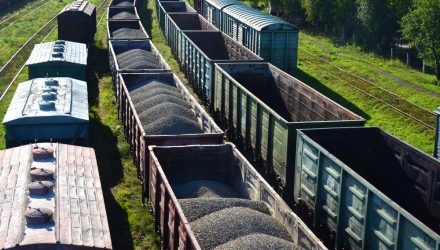With big assists from rising inflation and the global economic recovery, commodities are among this year’s best-performing asset classes.
Just look at the Invesco DB Commodity Index Tracking Fund (DBC). DBC, which tracks the DBIQ Optimum Yield Diversified Commodity Index and is usually comprised of 14 actively traded commodities futures contracts, is up 36.26% year-to-date. The Invesco Optimum Yield Diversified Commodity Strategy No K-1 ETF (PDBC), an actively managed fund seeking to beat DBC’s underlying index, is up 37%. All that while the S&P 500 is up “just” 16%.
Sounds good, but commodities, broadly speaking, have volatile histories. The asset class rapidly falls in and out of favor. Good news for investors considering DBC and PDBC: Some commodities experts believe that the current bull market could be the start of another lengthy super-cycle.
“This is just the first inning of a multi-year potentially decade-long commodities super-cycle,” said Jeff Currie, global head of commodities research at Goldman Sachs, on Bloomberg TV.
One reason a commodities super-cycle could just be getting started is the rapid adoption of renewable energy. As blackouts in California and the recent natural gas shortage in Europe prove, some governments transitioned to solar, wind, and the like on the rapid side.
As part of the transition to renewables and the broader embracing of environmental, social, and governance (ESG) investing principles, capital investment in old guard energy concepts, such as oil, coal, and mining declined, creating a supply imbalance, as Goldman’s Currie notes.
“The problem is the best fuel for that is gas to deal with the intermittency problem of when the wind is not blowing, and the sun is not shining. Now the problem with gas is it is an old economy hydrocarbon-based fuel,” Currie said.
Said another way, natural gas is the ideal fuel to use in a pragmatic transition phase to renewables, but many governments are reluctant to initially consider that because natural gas is a fossil fuel. However, from an energy acquisition standpoint, natural gas is often a viable option to fill voids created when weather doesn’t cooperate with solar or wind systems.
Goldman is also bullish on crude oil prices, recently raising its forecast on Brent crude, the global benchmark, to $90 per barrel from $80.
All of this is relevant to DBC because the Invesco exchange traded fund allocates 14% of its weight to Brent crude, 5.21% to natural gas, and 15.64% to West Texas Intermediate (WTI).
For more news, information, and strategy, visit the ETF Education Channel.
The opinions and forecasts expressed herein are solely those of Tom Lydon, and may not actually come to pass. Information on this site should not be used or construed as an offer to sell, a solicitation of an offer to buy, or a recommendation for any product.








